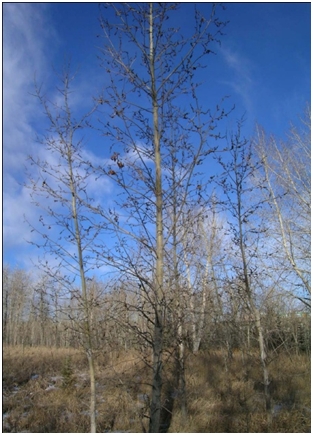The poplar bud gall mite is a tiny mite that would never be noticed except for the galls (swellings) it forms on poplar twigs. These tiny mites are eight-legged creatures related to spiders which feed first on leaf buds. While feeding, these mites stimulate the poplar to produce a hard lumpy gall that encases the tiny creatures where they gain protection within the solid gall. New galls form in early June and many generations are produced each year.

Key Points
- – A tiny mite that would never be noticed except for the galls (swellings) it forms on poplar twigs.
- – While feeding, these mites stimulate the poplar to produce a gall that protects the insect.
- – Galls formed on the branches are usually the first sign of infestation.
- – Chemical sprays are not effective, since the mites are protected inside their fortress-like galls.
- – Keep your poplar healthy by ensuring that it gets adequate water, especially during drought.
- – Choose Poplar cultivars that are resistant to this gall.
Tree Damage
On large poplars, the damage may go unnoticed until old galls fall from the tree. Fortunately the galls do not seriously harm a healthy poplar. Raking up the fallen galls simply becomes an additional yard chore.

Control Measures
- Chemical sprays are not effective, since the mites are protected inside their fortress-like galls.
- Pruning off reachable galls, provided the infestation is localized on the tree may be helpful.
- Keep your poplar healthy by ensuring that it gets adequate water, especially during drought.
- Choose cultivars that are resistant to this gall.

